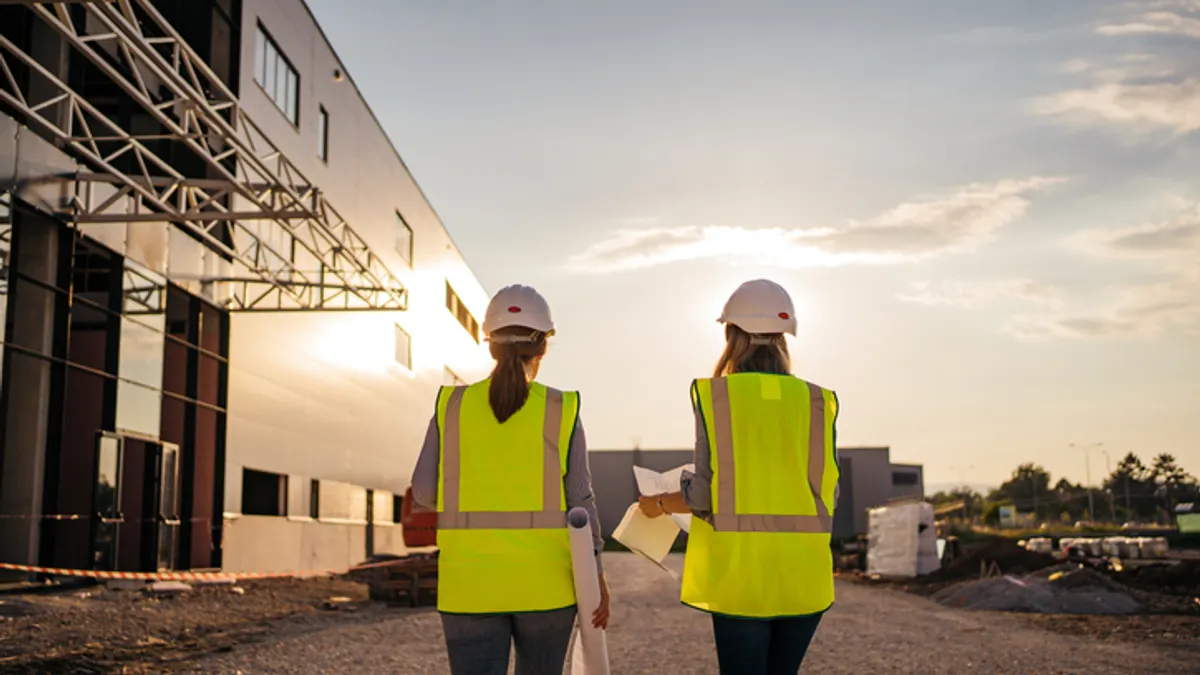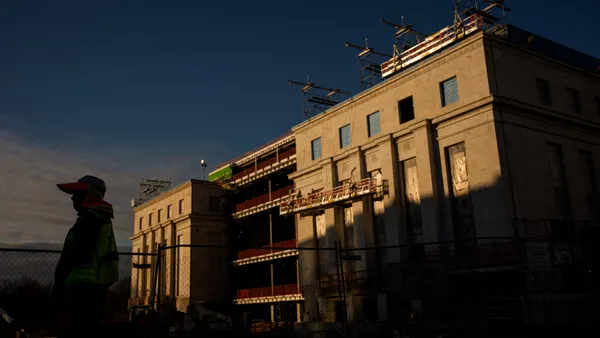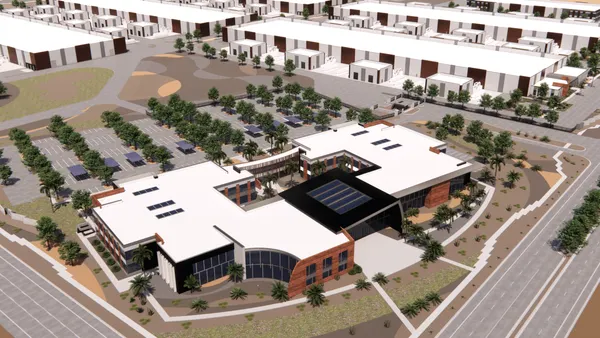Dive Brief:
-
The housing economy is slowly and steadily reaching something that resembles “normal,” according to a progress report by the National Association of Home Builders on Thursday.
-
The second-quarter NAHB/First American Leading Markets Index showed that markets in 75 of the 360 U.S. metropolitan areas returned to or exceeded the level of economic and housing activity between 2000 and 2003, which the association considers the last time things were normal.
-
Based on average permit, price and employment data in those areas, the index has determined that the country, on average, has returned to 92% of those normals, and that 66% of markets have improved since the second quarter of 2014.
Dive Insight:
The report “bodes well” for the rest of the year, NAHB Chairman Tom Woods said in a press release. Chief Economist David Crowe agreed, calling the report “encouraging.”
And it delivered good news for several small metros, including Midland and Odessa, TX, whose housing economies are twice as strong as they were pre-recession.
Other small cities making above-average strides are:
- Manhattan, KS
- Grand Forks, ND
- Casper, WY
At the top of the overall list was Baton Rouge, LA, which is doing 47% better than in the early 2000s; as well as:
- Austin, TX
- Honolulu
- Houston
- Oklahoma City
- San Jose, CA
- Los Angeles
- Charles, SC
- Salt Lake City
- Nashville
Still, permits were a weak spot, making the least progress toward normal, with just 26 markets reaching that "normal" milestone. The U.S. Census Bureau last month reported that single-family building permits barely budged from May to June, even as the overall number of housing permits — including multifamily — shot up by 7.4%.













